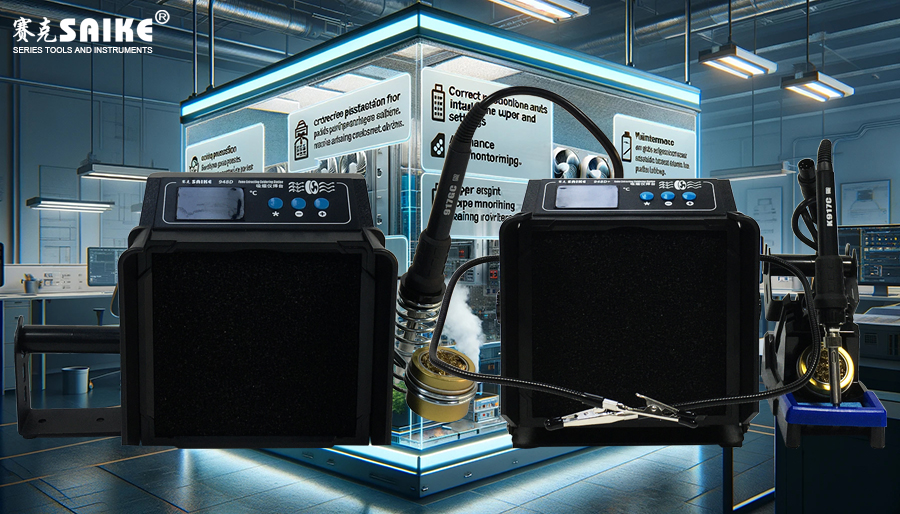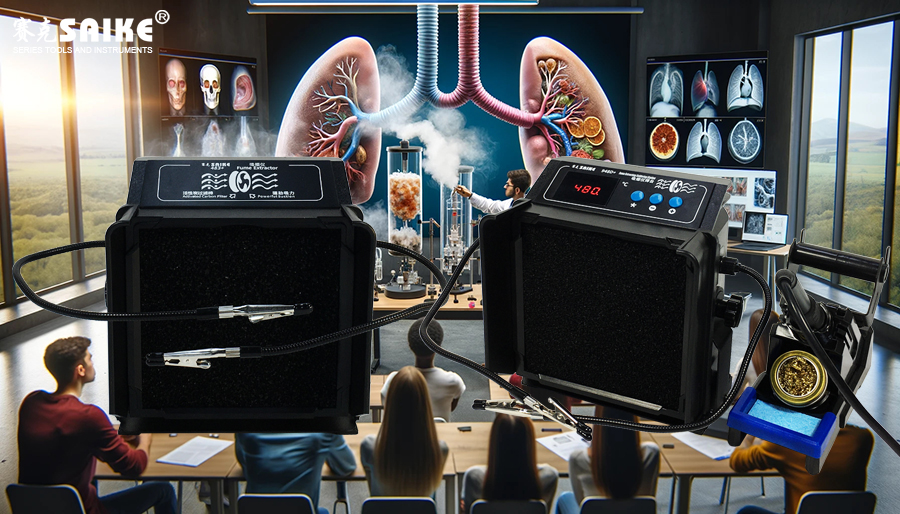
SK-YJ000XYY-KP 100012
I. Correct Positioning and Installation
1.Appropriate Placement:
– Position the smoking absorber near the source of smoke generation, ideally within 2 feet. Ensure that the smoke enters the intake directly, avoiding smoke diffusion in the space before being sucked in.
2.Avoid Air Flow Interference:
– Make sure the smoking absorber’s operation is not affected by airflows from other equipment such as air conditioners or fans, as these disturbances may blow the smoke away from the effective capture range of the smoking absorber.
II. Proper Adjustment and Settings
1.Adjust Fan Speed:
– Adjust the fan speed according to the amount of smoke. If the smoke volume is large, increase the fan speed to improve suction efficiency; when the smoke volume is small, the fan speed can be appropriately reduced to conserve energy.
2.Choose the Right Filter:
– Use the appropriate type of filter for the current task. For example, welding operations are suitable for HEPA and activated carbon filters that can filter metal particles and harmful gases.
III. Maintenance and Monitoring
1.Regular Filter Replacement:
– Regularly check and replace filters to maintain the maximum efficiency of the smoking absorber. Clogged filters can reduce performance and increase energy consumption.
2.Clean the Smoking Absorber:
– Regularly clean the interior and exterior of the smoking absorber, including the fan and air intake, to prevent dust and particle accumulation that can affect performance.
3.Monitor Equipment Performance:
– Use sensors or other monitoring tools to regularly check the performance of the smoking absorber. Pay attention to any abnormal indications, such as reduced suction or increased noise, which may be signs that the filter needs to be replaced or the equipment requires maintenance.
IV. Operational Skills
1.Reasonable Operation:
– Avoid running the smoking absorber for extended periods without necessity, as this can extend the equipment’s lifespan and reduce energy consumption.
2.Effective Use of Automatic Functions:
– If the smoking absorber has an automatic sensing function, ensure it is properly enabled and adjusted. Automatic sensing can automatically adjust the fan speed based on the smoke volume, allowing for more efficient energy use.
V. Training and Awareness
1.Operator Training:
– Ensure that all operators using the smoking absorber have received appropriate training on how to effectively utilize the equipment and perform basic troubleshooting.
2.Safety Awareness Enhancement:
– Regularly conduct safety education and equipment update training for staff to raise awareness of operational safety.
By implementing these techniques, not only can the performance of the smoking absorber be maximized, but the safety and efficiency of the entire work environment can also be improved.


